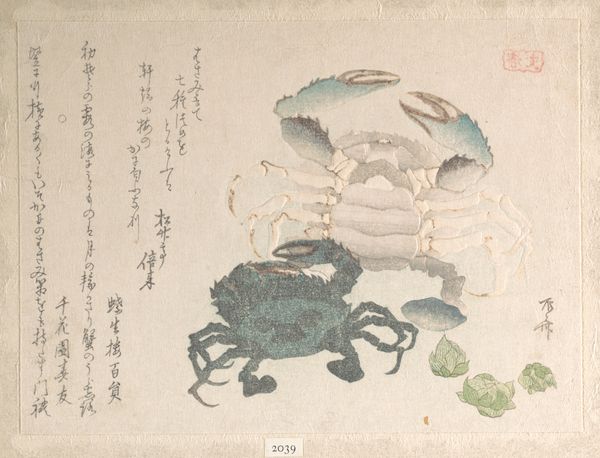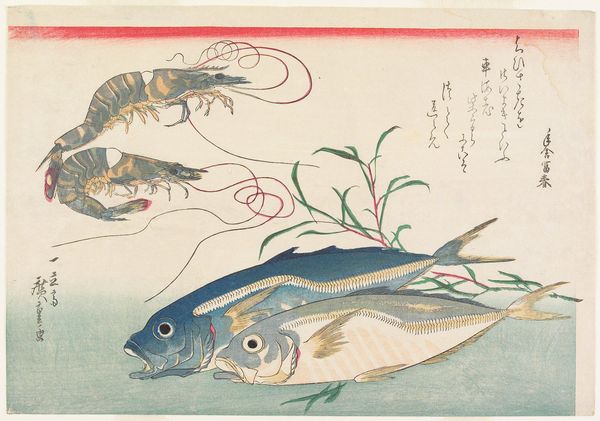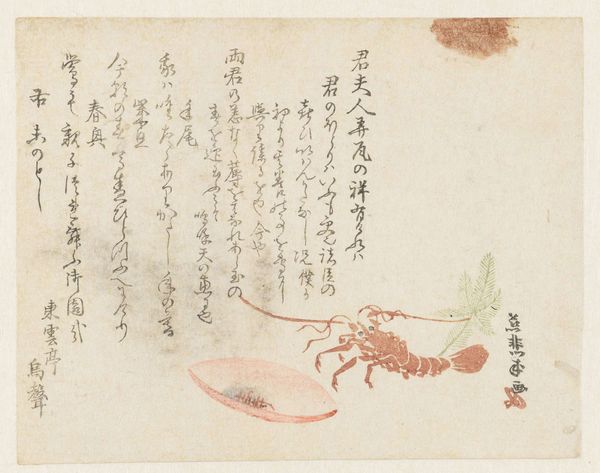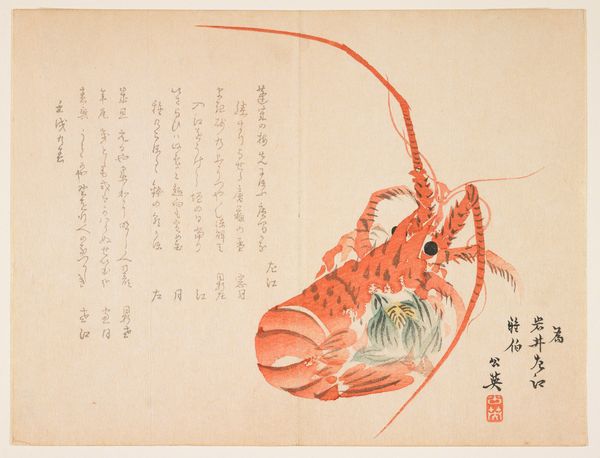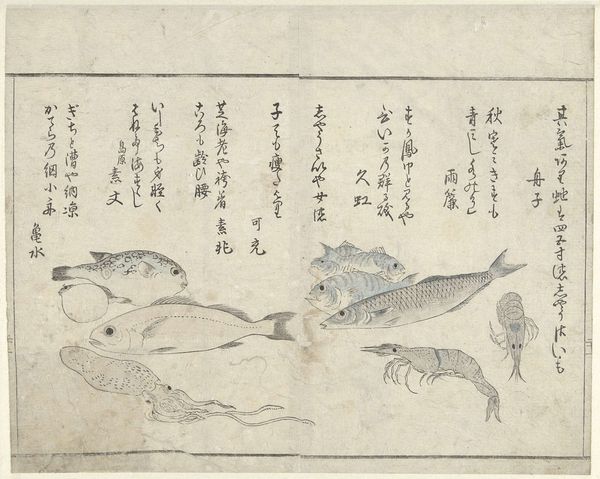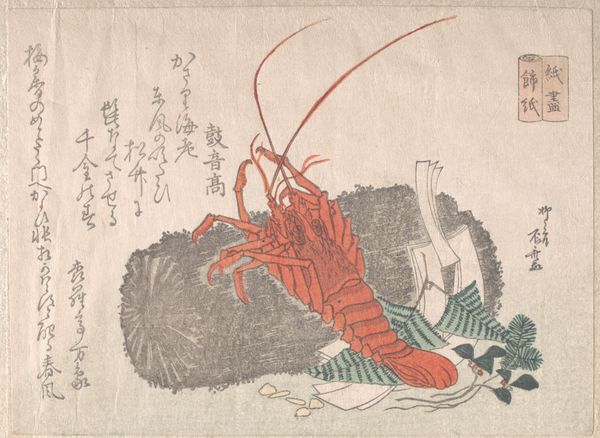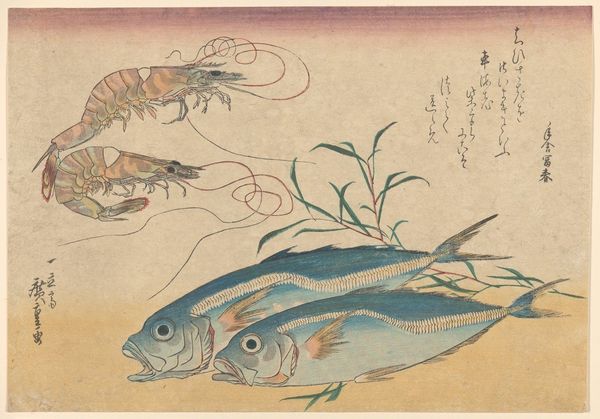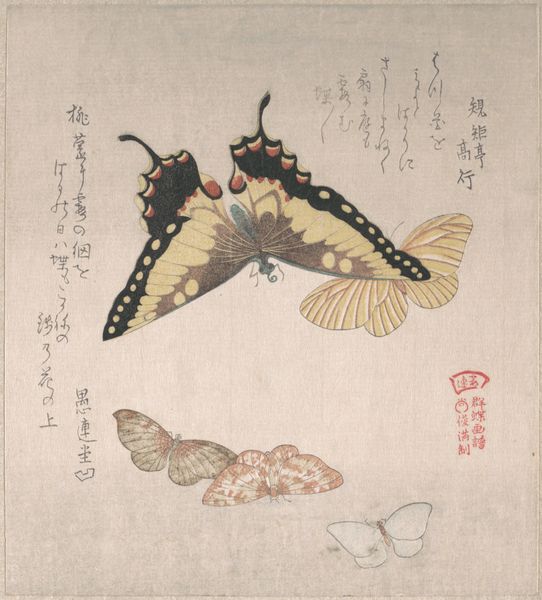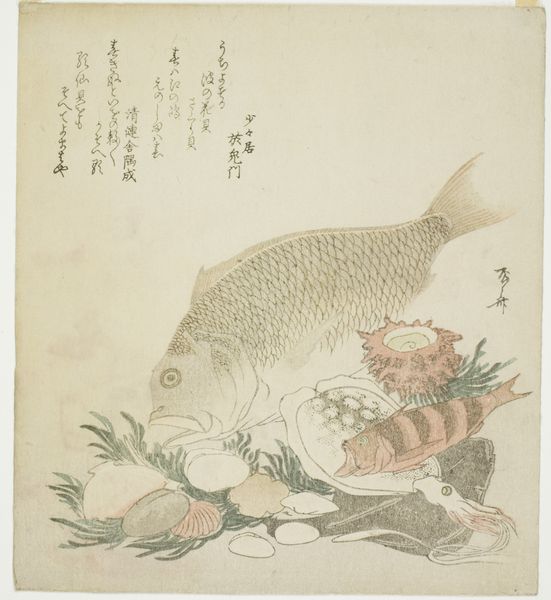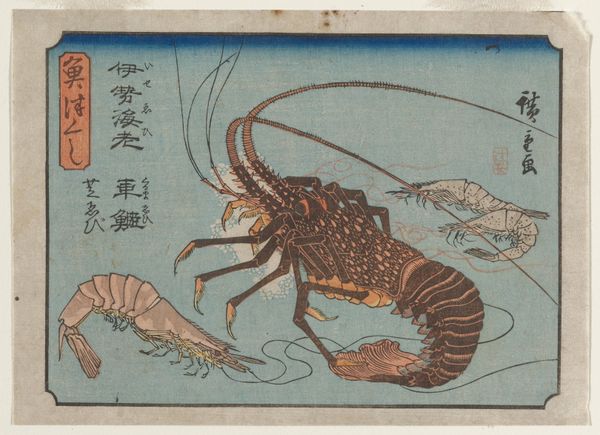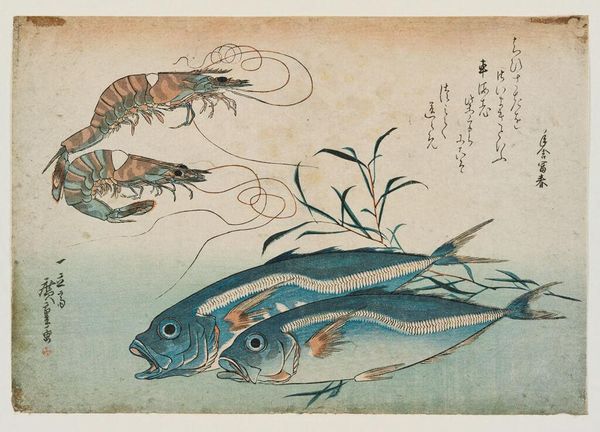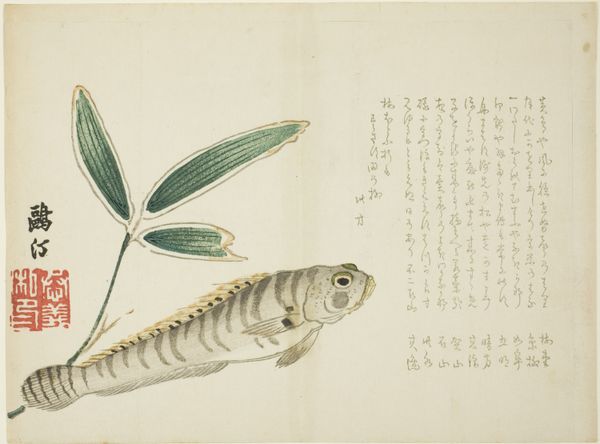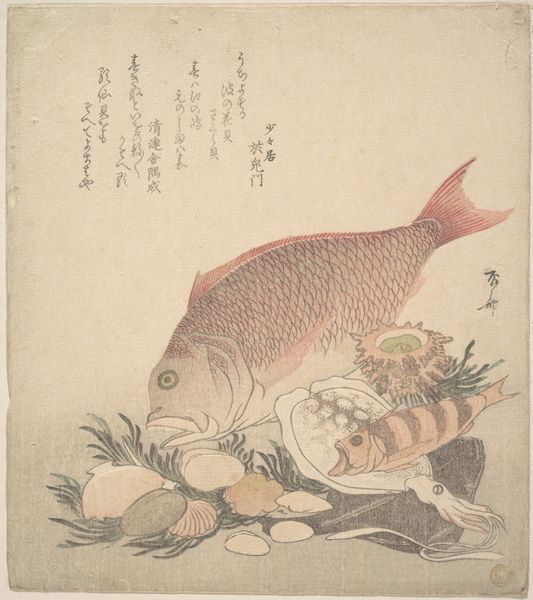
painting, print, watercolor
#
fish
#
water colours
#
painting
# print
#
asian-art
#
ukiyo-e
#
watercolor
Dimensions: 8 3/16 x 11 in. (20.8 x 27.9 cm)
Copyright: Public Domain
Editor: Here we have Ryūryūkyo Shinsai's "Shrimp and Cuttlefish," a watercolor print dating from 1750 to 1835. I find the composition really interesting – a large shrimp dominating the foreground, some faint plants, and a translucent shape floating at the top... Almost dreamlike! What can you tell us about this piece? Curator: Notice the labour inherent in this Ukiyo-e print. Multiple blocks, painstakingly carved, each representing a separate color. Consider the paper: Where was it sourced? How was it made? Look at the economic exchange at play – who was buying prints like this, and what did owning such an object represent? Was it about the beautiful aesthetic or social prestige and how does it allude to class structures. Editor: That's fascinating, thinking about the actual process! I hadn't considered that. So, instead of seeing it as just an image of a shrimp, it’s more about the consumption, labor and social structures of that time. Curator: Exactly. Even the subject matter. Seafood would have been readily available; a popular item at the market. Who had access to fresh shrimp? Think about the resources required to create these prints in the first place. Pigments derived from minerals and plants and animals…these materials had inherent value. Where does "high art" meet commodity here? How might our modern access change our interpretation? Editor: Wow. It completely changes how I see this print. Thinking about those carved blocks, the sourcing of materials, and its circulation gives it new depth, making it about a lot more than just food. I will definitely consider it through this lens moving forward. Curator: It’s these questions about production and exchange that make viewing artwork such an active, rather than passive experience. I see prints completely differently now myself, by having to explain all of this.
Comments
No comments
Be the first to comment and join the conversation on the ultimate creative platform.
